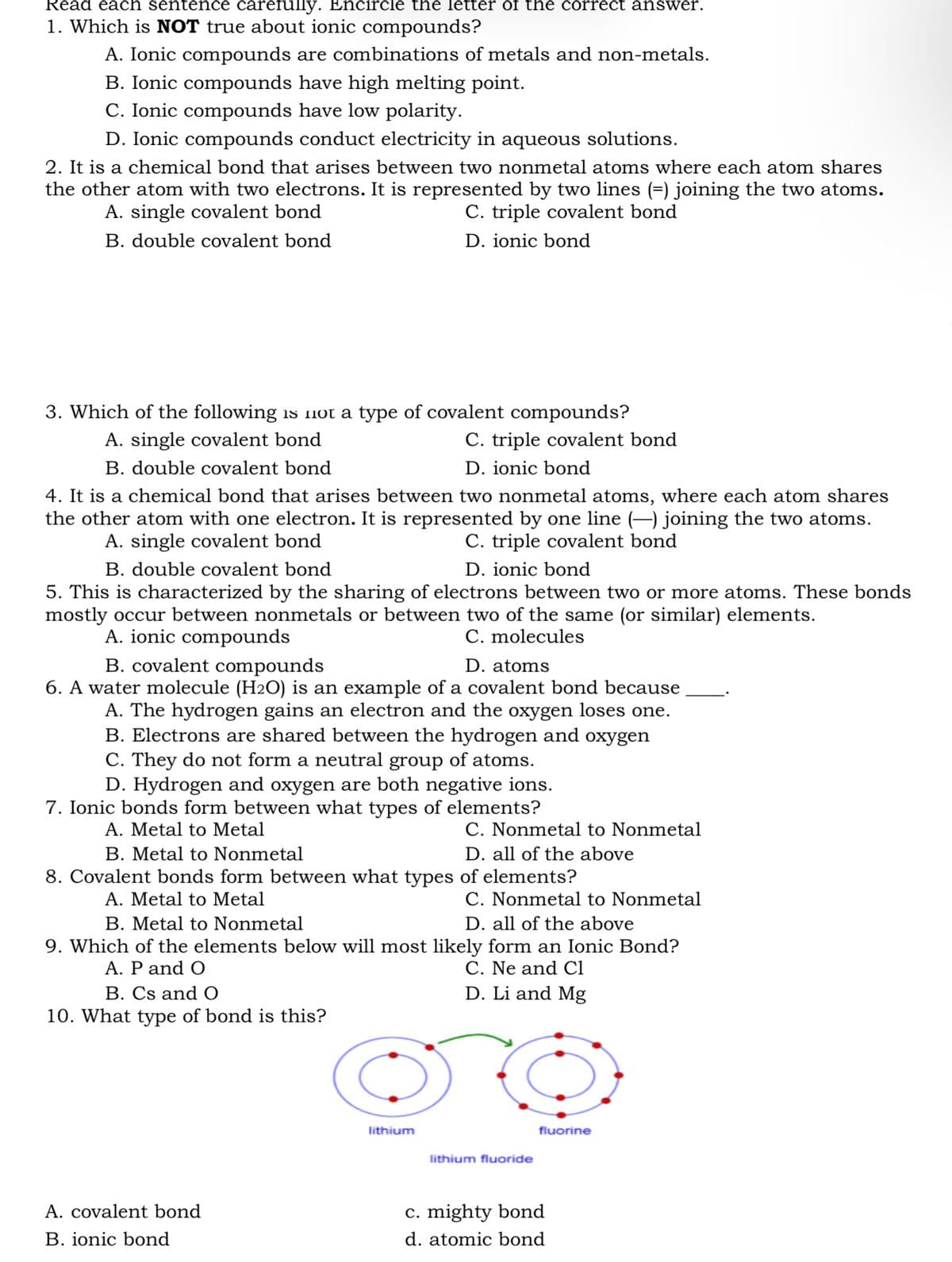1. Which is NOT true about ionic compounds? A. Ionic compounds are combinations of metals and non-metals. B. Ionic compounds have high melting point. C. Ionic compounds have low polarity. D. Ionic compounds conduct electricity in aqueous solutions. 2. It is a chemical bond that arises between two nonmetal atoms where each atom shares the other atom with two electrons. It is represented by two lines (=) joining the two atoms. A. single covalent bond C. triple covalent bond B. double covalent bond D. ionic bond
States of Matter
The substance that constitutes everything in the universe is known as matter. Matter comprises atoms which in turn are composed of electrons, protons, and neutrons. Different atoms combine together to give rise to molecules that act as a foundation for all kinds of substances. There are five states of matter based on their energies of attraction, namely solid, liquid, gases, plasma, and BEC (Bose-Einstein condensates).
Chemical Reactions and Equations
When a chemical species is transformed into another chemical species it is said to have undergone a chemical reaction. It consists of breaking existing bonds and forming new bonds by changing the position of electrons. These reactions are best explained using a chemical equation.

Trending now
This is a popular solution!
Step by step
Solved in 3 steps







